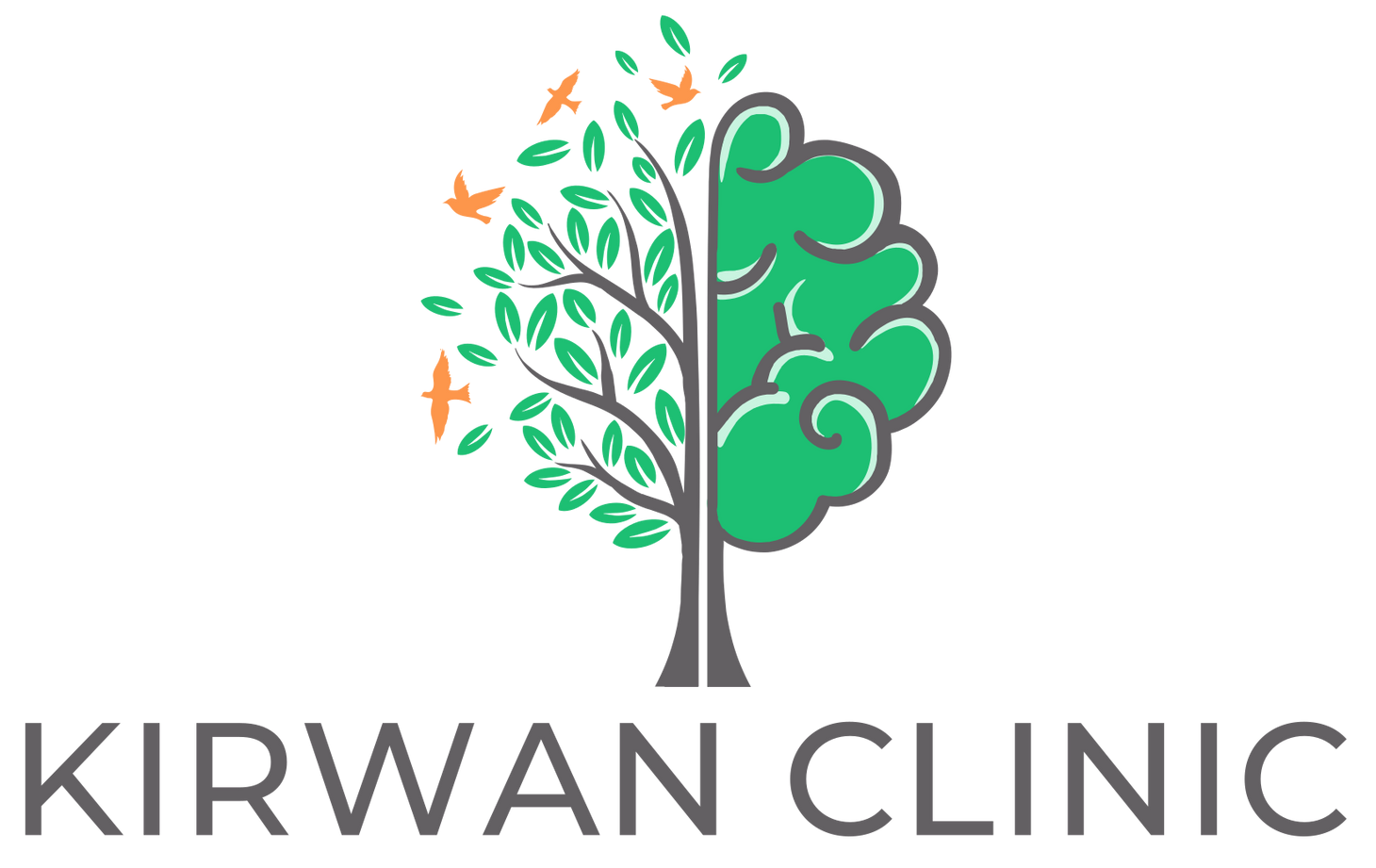Obsessive Compulsive Disorder
What is Obsessive-Compulsive Disorder?
Obsessive-Compulsive Disorder (OCD) is a chronic mental health condition characterised by persistent, intrusive thoughts (obsessions) and repetitive behaviours or mental rituals (compulsions) performed to alleviate distress. These obsessions and compulsions can interfere with daily activities, relationships, and overall well-being.
Obsessive-Compulsive Disorder: Physical Health Implications
As well as impacting mental health, there are well-established links between OCD and physical health:
- Stress and Anxiety Response: OCD triggers chronic stress, leading to elevated cortisol levels, which can negatively impact the immune system, digestion, and cardiovascular health.
- Physical Health Consequences: Severe compulsions can impact physical health both directly and indirectly:
- Excessive handwashing can cause skin irritation or infections.
- Repeated checking behaviours can lead to muscle strain or joint pain.
- Constant stress and anxiety can contribute to high blood pressure, headaches, and gastrointestinal issues.
- Sleep Disruptions: Individuals with OCD often struggle with insomnia or poor sleep quality due to intrusive thoughts and compulsive behaviours.
Causes and Risk Factors for Obsessive-Compulsive Disorder
The exact cause of OCD is not fully understood, but it is believed to result from a combination of genetic, biological, and environmental factors.
- Genetic Factors: Studies suggest that OCD has a hereditary component, meaning it can run in families. Specific genes related to serotonin regulation may play a role.
- Brain Differences: Functional MRI scans reveal hyperactivity in the orbitofrontal cortex, caudate nucleus, and thalamus, which are involved in processing emotions and decision-making.
- Neurotransmitter Imbalances: Low levels of serotonin may contribute to OCD symptoms. Medications that increase serotonin availability, such as SSRIs, are commonly used for treatment.
- Autoimmune Reactions: In children, infections such as streptococcal throat infections (PANDAS) can trigger sudden-onset OCD symptoms, possibly due to an immune system response affecting brain function.
- Behavioural Conditioning: Some people develop OCD due to learned behaviours. For example, if someone washes their hands to relieve anxiety about germs and feels temporary relief, they may continue the behaviour compulsively.
- Environmental Stressors and Modeling: Major stressful events, trauma, or long-term exposure to anxiety-provoking situations can act as triggers or intensify OCD symptoms. Equally, people with OCD may have had certain ways of thinking or rituals/habits demonstrated to them by family growing up.
Symptoms of Obsessive-Compulsive Disorder
OCD symptoms vary from person to person, but they generally fall into two categories: obsessions and compulsions.
Obsessions (Intrusive Thoughts)
Obsessions are persistent, unwanted thoughts, images, or urges that cause distress. Common themes for obsessions include:
- Fear of contamination (e.g., germs, dirt, or chemicals)
- Fear of harming oneself or others, even without intent
- Need for symmetry, order, or exactness
- Unwanted taboo thoughts (e.g., aggressive, religious, or sexual themes)
- Fear of making a mistake or missing details
- Excessive concerns about moral or ethical correctness
Compulsions (Repetitive Behaviors)
Compulsions are behaviours performed to reduce distress or prevent a feared event. Common compulsions include:
- Excessive cleaning or handwashing
- Checking (e.g., ensuring doors are locked, appliances are turned off)
- Counting, tapping, or repeating words in a specific pattern
- Arranging objects in a precise manner
- Seeking reassurance from others repeatedly
- Avoiding situations that trigger obsessions (e.g., not touching certain objects)
Preventing Obsessive-Compulsive Disorder
While OCD cannot always be prevented, certain strategies may reduce the risk of developing severe symptoms:
- Early Intervention: Recognizing and addressing anxiety disorders in childhood or adolescence may help prevent OCD from worsening.
- Stress Management: Practicing relaxation techniques, such as deep breathing, mindfulness, and yoga, can reduce anxiety and help manage intrusive thoughts.
- Healthy Lifestyle Choices: Regular exercise, balanced nutrition, and sufficient sleep can support brain health and emotional resilience.
- Cognitive-Behavioural Strategies: Cognitive-behavioral therapy (CBT) can help individuals control obsessive thinking by teaching them how to manage negative thought patterns.
- Limit Avoidance Behaviors: Avoiding situations that trigger anxiety can reinforce OCD. Gradual exposure therapy helps build tolerance to distressing thoughts, and allows people to enjoy everyday life more.
- Medication When Necessary: For individuals with a family history of OCD or anxiety disorders, early use of serotonin-enhancing medications may help manage symptoms before they become severe.
- Seeking Support: Regular therapy and strong social connections can provide emotional support and coping mechanisms.
Types of Obsessive-Compulsive Disorder
1. Contamination OCD
- Obsessions: Fear of germs, dirt, or toxic substances leading to illness.
- Compulsions: Excessive handwashing, showering, cleaning, or avoiding potentially "contaminated" objects and places.
2. Checking OCD
- Obsessions: Intense fear of causing harm due to negligence, such as leaving doors unlocked, appliances on, or making a critical mistake.
- Compulsions: Repeatedly checking doors, stoves, water taps, emails, or messages to ensure nothing bad happens.
3. Symmetry and Order OCD
- Obsessions: Strong need for things to be arranged in a particular way, fear that disorder leads to bad consequences.
- Compulsions: Arranging and reorganising objects, ensuring symmetry, repeating actions until they feel "just right."
4. Intrusive Thoughts OCD
- Obsessions: Disturbing and unwanted thoughts or images, often violent, sexual, or religious in nature.
- Compulsions: Mental rituals, excessive praying, neutralising thoughts, or avoiding situations that may trigger these obsessions.
5. Hoarding OCD
- Obsessions: Fear of losing important items or an emotional attachment to objects.
- Compulsions: Difficulty discarding objects, leading to excessive clutter and distress.
6. Pure O (Pure Obsessional OCD)
- Obsessions: Internal, repetitive thoughts without visible compulsions. Individuals experience intense distress but do not engage in overt rituals.
- Compulsions: Mental reassurance, silent prayers, mental counting, avoidance of triggers.
Diagnosis of Obsessive-Compulsive Disorder
1. Clinical Interview
- The doctor asks about the nature, duration, and severity of symptoms.
- Questions focus on obsessions, compulsions, distress levels, and daily impact.
2. Diagnostic Criteria (DSM-5)
OCD is diagnosed using criteria from the Diagnostic and Statistical Manual of Mental Disorders (DSM-5), which include:
- Presence of obsessions and/or compulsions.
- Recognition that obsessions are excessive or irrational (although some may lack insight).
- Time-consuming symptoms (more than one hour per day) or significant distress.
- Impairment in daily activities, work, school, or relationships.
3. Differential Diagnosis
The doctor rules out other conditions with similar symptoms, such as:
- Generalised Anxiety Disorder (GAD)
- Depression
- Phobias
- Tic Disorders or Tourette Syndrome
- Body Dysmorphic Disorder (BDD)
- Hoarding Disorder
- Schizophrenia
4. Psychological Assessments
Standardised questionnaires, such as the Yale-Brown Obsessive-Compulsive Scale (Y-BOCS), help measure symptom severity.
5. Medical Tests (If Needed)
- Blood tests or imaging (MRI/CT scans) may be done to rule out other medical conditions affecting mental health.
Treatment of Obsessive-Compulsive Disorder
OCD is a chronic but manageable condition, and treatment often includes a combination of therapy, medication, and lifestyle changes.
1. Cognitive-Behavioral Therapy (CBT)
The gold standard for OCD treatment is Exposure and Response Prevention (ERP), a type of CBT that:
- Exposes individuals to feared situations or thoughts in a controlled manner, so that they can handle them gradually.
- Helps them resist performing compulsions, while also managing the emotional distress that arises from this through emotion regulation techniques and cognitive restructuring.
- Reduces anxiety over time through repeated exposure.
2. Medication
- Selective Serotonin Reuptake Inhibitors (SSRIs) (e.g., Fluoxetine, Sertraline, Fluvoxamine) help regulate serotonin levels.
- Tricyclic Antidepressants (TCAs) (e.g., Clomipramine) may be used for severe cases.
- Antipsychotics (e.g., Risperidone) may be prescribed for treatment-resistant OCD.
3. Mindfulness and Relaxation Techniques
- Meditation, breathing exercises, and progressive muscle relaxation help manage stress.
- Mindfulness reduces attachment to obsessive thoughts.
4. Lifestyle Modifications
- Regular exercise to reduce anxiety.
- Balanced diet to support brain health.
- Sufficient sleep to improve mood regulation.
- Limiting alcohol and caffeine, which can worsen anxiety symptoms.
5. Support Groups and Therapy
- OCD support groups provide peer encouragement.
- Family therapy educates loved ones about OCD and how to provide support.
6. Severe OCD Treatment Options
- Intensive Outpatient or Inpatient Programs for extreme cases.
- Deep Brain Stimulation (DBS) or Transcranial Magnetic Stimulation (TMS) for treatment-resistant OCD.
Early diagnosis and treatment can prevent worsening symptoms and help individuals lead fulfilling lives. Seeking professional help at the first signs of OCD is crucial for long-term well-being.


